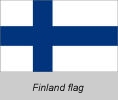 kilometers
and therefore Finland is the sixth largest country in Europe. The area is comparable
with the one of Germany (357.022 square kilometers). Three-quarter of this area
is forest covered. Very characteristic are the 187,888 lakes. A quarter of the
area of Finland is situatednorth from the polar circle. The neighbour countries
of Finland are Sweden in the West, Norway in the north, Russia in the
kilometers
and therefore Finland is the sixth largest country in Europe. The area is comparable
with the one of Germany (357.022 square kilometers). Three-quarter of this area
is forest covered. Very characteristic are the 187,888 lakes. A quarter of the
area of Finland is situatednorth from the polar circle. The neighbour countries
of Finland are Sweden in the West, Norway in the north, Russia in the east and Estonia in the south.
east and Estonia in the south. The climate is determined by cold winters and warm summers. In the summer the thermometer can reach 30 degrees in the south, but in the winter months, mainly in January and February, the temperatures can reach -20 or even -30 degrees. Two natural phenomenons occur in Finland. In the summer the midnight sun, when the sundoes not set down for 73 days and in the winter the polar lights when the sun remains below the horizon for 51 days , also during the daytime. Because of the low number of citizens compared with the bigt
 otal
area there results a population density of 17 inhabitants per square kilometer.
For comparison: Germany has a population density of 231 inhabitants per square
kilometer. 65% of the Finns live in cities, 35% in countrified areas. Of the
5.2 million citizens almost 1 million people live in the metropolitan area Helsinki.
Further big cities are Tampere (193.000), Turku (172.000) and Oulu (118.000).
The official national languages are Finnish and Swedish, whereat Swedish is
only spoken by 6% of the population as the mother language. A minority language
is Saami, the language of the Lapps.
otal
area there results a population density of 17 inhabitants per square kilometer.
For comparison: Germany has a population density of 231 inhabitants per square
kilometer. 65% of the Finns live in cities, 35% in countrified areas. Of the
5.2 million citizens almost 1 million people live in the metropolitan area Helsinki.
Further big cities are Tampere (193.000), Turku (172.000) and Oulu (118.000).
The official national languages are Finnish and Swedish, whereat Swedish is
only spoken by 6% of the population as the mother language. A minority language
is Saami, the language of the Lapps. In Finland rules religion of freedom since 1923. 89% of the population has been baptized as Lutheran and less than 1% belongs to the Orthodox Church Head of the state is in Finland the president. The period of office lasts 6 years and he can be re-elected at most two times. The actual president is Tarja Halonen, which was elected in February 2000. The parliament consists of 200 members, which are elected every four years. The government needs the trust of the parliame
 nt.
The last vote of the parliament was in 2003, where the most powerful parties
were the Centre Party (55 seats), the Social Democratic Party (53 seats) and
the National Coalition Party (40 seats). A coalition consisting of the Centre
Party, the National Coalition Party and the Swedish People’s Party was
formed.The President is Matti Vanhanen, representative of the Centre Party.
Finland is member of the European Union (EU) since 1995. In the beginning of
the 1990s Finland had a big crisis because of the breakdown of Russia and it
expected of the membership solidarity and collective safety.
nt.
The last vote of the parliament was in 2003, where the most powerful parties
were the Centre Party (55 seats), the Social Democratic Party (53 seats) and
the National Coalition Party (40 seats). A coalition consisting of the Centre
Party, the National Coalition Party and the Swedish People’s Party was
formed.The President is Matti Vanhanen, representative of the Centre Party.
Finland is member of the European Union (EU) since 1995. In the beginning of
the 1990s Finland had a big crisis because of the breakdown of Russia and it
expected of the membership solidarity and collective safety. In 1999 Finland joined the third stage of the European Economic and Monetary Union (EMU) and introduced the Euro in contrast to Sweden, which rejected it again in 2003. In the foreign policy Finland holds his alliance freedom but approves the co
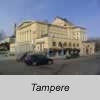 mmon
policy in the union.
mmon
policy in the union. By the initiative of Finland the Union developed a Nordic Dimensioning of their policy aiming to strengthen the cooperation with Russia and other partners. Furthermore Finland is an active partner of the UNO in peace saving activities. Education and research are very much mined in Finland. The PISA-study demonstrated that Finland is the front runner at the pupil performances in OECD comparison. The expense for education aims accounts for 7.8% of the gross domestic product. For example in Germany it only accounts for 4.8%. The equipment of the schools and the apprenticeships of the teachers are very good. A further figure which is impressive: in Finland 60% of the pupils pass the school-leaving examination, in Germany only 28%. Research underlies a
 high national concern and in the last years it was particularly nurtured, especially
the information technology. Industry and economy have made a unique development.
Until the middle of the 20th century Finland was an agrarian nation and nowadays
it is the most competitive country of the world behind the USA. The forest is
the most important raw material resource of the country. The forest industry
grew especially in the beginning of the 20th century quickly and was very dominant
until the last decades of this century. Since the end of the Second World War
the metal industry grew very quickly and today the electronic industry dominates
with the figurehead Nokia – the most important export product. Nokia is
the world market leader on the mobile phone market and stands for reliability
and quality.
high national concern and in the last years it was particularly nurtured, especially
the information technology. Industry and economy have made a unique development.
Until the middle of the 20th century Finland was an agrarian nation and nowadays
it is the most competitive country of the world behind the USA. The forest is
the most important raw material resource of the country. The forest industry
grew especially in the beginning of the 20th century quickly and was very dominant
until the last decades of this century. Since the end of the Second World War
the metal industry grew very quickly and today the electronic industry dominates
with the figurehead Nokia – the most important export product. Nokia is
the world market leader on the mobile phone market and stands for reliability
and quality. Nowadays Finland is a high-developed industry nation, which has the most mobile phones a
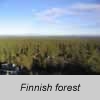 nd
internet accesses per head of the population of the world. Famous Finns are
Mika Häkkinen (Formula 1) and Janne Ahonen (ski-jumper). Also known are
the Finnish band “The Rasmus” and the Finnish singer “HIM”.
The sauna belongs to the Finnish culture and can be found in almost every household.
Furthermore the Finns drink the most coffee in Europe. Finnish people are tendential
quieter and more closed than the Germans.
nd
internet accesses per head of the population of the world. Famous Finns are
Mika Häkkinen (Formula 1) and Janne Ahonen (ski-jumper). Also known are
the Finnish band “The Rasmus” and the Finnish singer “HIM”.
The sauna belongs to the Finnish culture and can be found in almost every household.
Furthermore the Finns drink the most coffee in Europe. Finnish people are tendential
quieter and more closed than the Germans. Reindeers and elks can be found in Finland. The reindeer breed is in Lapland the main income sector. Santa Clause is at home in the Santa Clause Village in Rovaniemi at the polar circle.
That was now a short summary of information about Finland. If you want to know more about Finland visit http://www.finland.fi .
Vaasa is the city where I have studied. It has 56925 inhabitants, thereof 72% speak Finnish, 25% Swedish and 3% other languages. In 1606 Vaasa was founded.
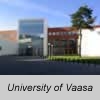 There
are 3 universities and 2 technical universities in Vaasa consisting of over
10000 students. For this reason every fifth citizen is a student. Specific emphases
are innovation and internationality. The whole university area is alleged by
the university “Vaasan yliopisto” (where I have studied). This
There
are 3 universities and 2 technical universities in Vaasa consisting of over
10000 students. For this reason every fifth citizen is a student. Specific emphases
are innovation and internationality. The whole university area is alleged by
the university “Vaasan yliopisto” (where I have studied). This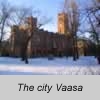 university has 4 faculties with around 4000 students. Before the Second World
War Vaasa became the second biggest trading centre of the country. After the
city the industry is offering the most jobs. Important entrepreneurs are the
ABB group (2700 employees) and Wartsilä (1600 employees).
university has 4 faculties with around 4000 students. Before the Second World
War Vaasa became the second biggest trading centre of the country. After the
city the industry is offering the most jobs. Important entrepreneurs are the
ABB group (2700 employees) and Wartsilä (1600 employees). In the sector of the middle class it’s very important to mention Koti Pizza, which is the second biggest pizza chain in Europe. Furthermore the industry area of Vaasa also contains of the Strömbergpark, which accommodates 10 enterprises of the ABB group and 60 further small and medium class enterprises.
If you want to know more about Vaasa visit: http://www.vaasa.fi .
Stand: May 2004
Source Picture "Finland" : here ; Source Picture "Polar lights" : here